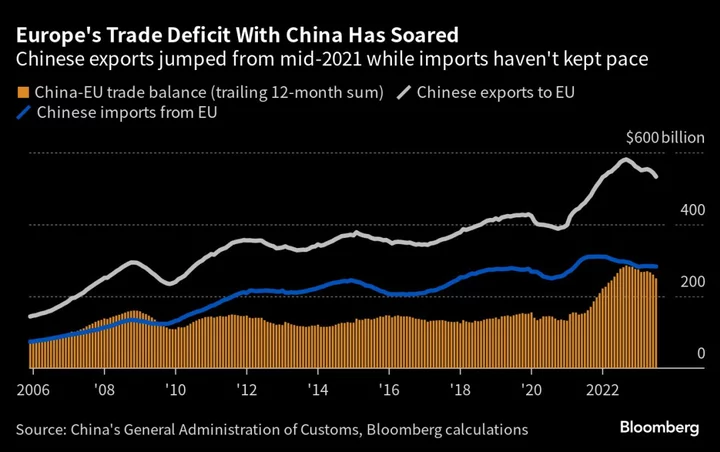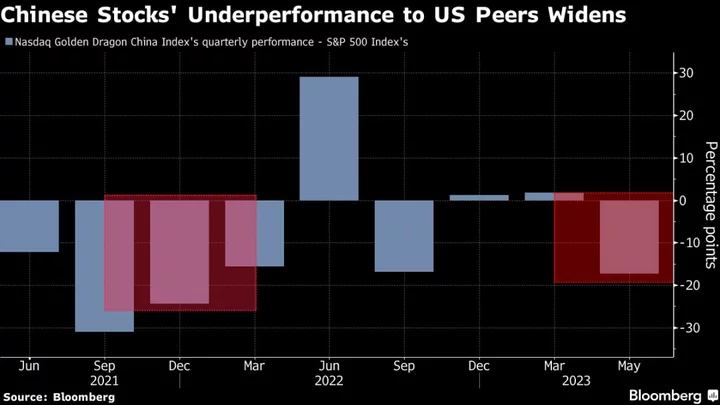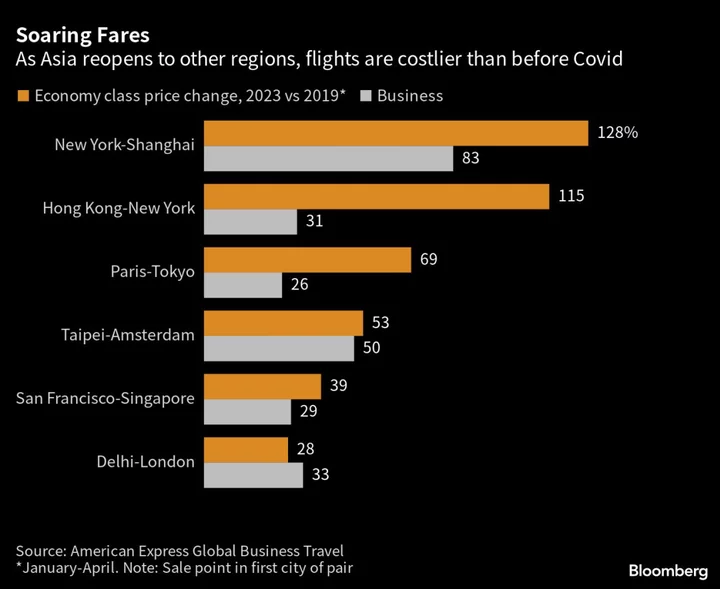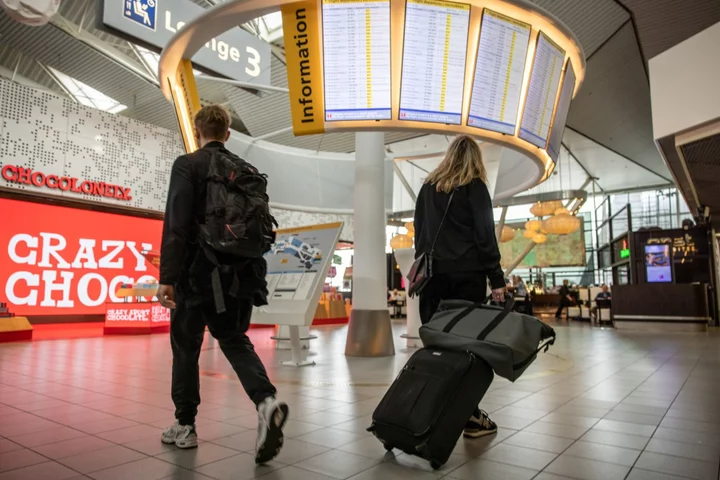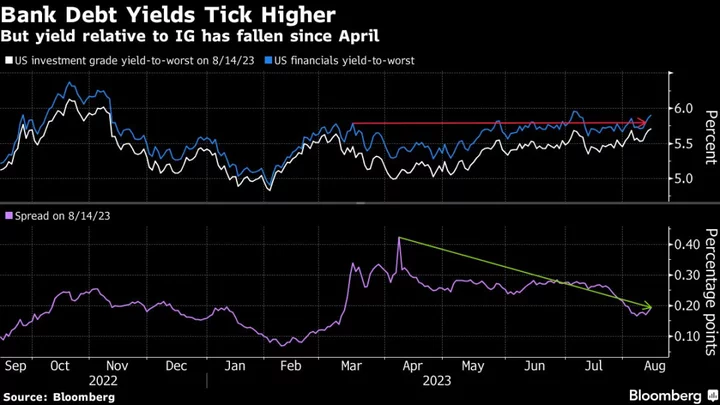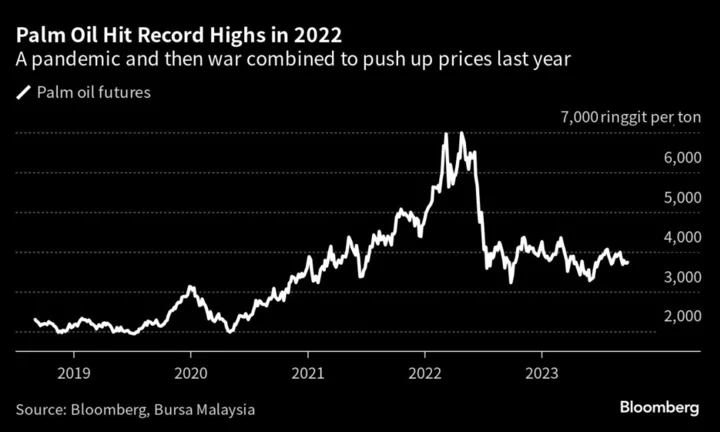The US and European Union failed to reach an accord on steel and aluminum ahead of a summit on Friday and are poised to keep negotiating until a year-end deadline, when tariffs would return on billions of dollars of transatlantic trade in the absence of a deal.
The deadlock deprives US President Joe Biden, European Commission President Ursula von der Leyen and European Council President Charles Michel from being able to announce a deal on the so-called Global Arrangement on Sustainable Steel and Aluminum at the meeting in Washington as hoped, according to people familiar with the discussions.
The talks are aimed at settling a dispute that started when then-President Donald Trump slapped tariffs on metals imports from Europe, citing risks to national security, to which the EU responded with retaliatory measures. Failure to reach an accord would mean that levies on $10 billion of exports between the EU and US would automatically come back into force at the start of 2024.
According to the draft of the joint statement of the summit seen by Bloomberg News, both sides said that they made “substantial progress to identify the sources of non-market excess capacity” and “achieved a better understanding of the tools to address the emissions intensity of the steel and aluminum industries.” They said they will continue discussing these objectives over the next two months.
A meeting Thursday between US Trade Representative Katherine Tai and the EU’s chief trade negotiator Valdis Dombrovskis ended without an agreement, said the people, who asked not to be identified because the talks were private.
The EU and the US also failed to conclude a critical minerals agreement that would allow for EU companies to benefit from Biden’s green subsidies. The draft statement says that they have “made progress” in the discussions and will continue these negotiations in the coming weeks.
Elsewhere, the US and EU will look to align their positions on the wars in the Middle East and Ukraine.
“We condemn in the strongest possible terms Hamas and its brutal terrorist attacks across Israel. There is no justification for terrorism. We affirm Israel’s right to defend itself against these heinous attacks, in line with international law, including international humanitarian law,” the draft statement says and adds that it is “crucial to prevent regional escalation,” which is a key agenda item of Friday’s meeting.
While the Iran-Hamas war has overshadowed the summit, the US and EU presidents will be keen to reaffirm that they will continue to support Kyiv militarily and financially for as long as it takes and continue to target the Kremlin’s ability to continue the conflict, including by ramping up efforts to enforce sanctions.
Shares of American steelmakers rose in after-hours trading Thursday. In Europe early Friday, shares of Luxembourg-based ArcelorMittal SA, the world’s biggest steelmaker outside of China, fell as much as 3.2%. The Stoxx Europe 600 Basic Resources sub-index was the worst-performing sector in Europe on Friday, heading for its steepest weekly drop in about four months.
The GSA has two main planks: tackling excess production of non-market economies and carbon emissions in dirty metals. Negotiators did make progress on the first of those two issues. On excess capacity, the EU is open to launching investigations in the coming months that could lead to new tariffs aimed at the non-market practices of economies such as China, while the US could introduce additional levies of its own, Bloomberg previously reported.
The US has imposed a 25% tariff on steel imports since 2018 and the EU applies about the same level of duties on an array of steel imports under its own safeguard measures. That level of tariff would act as a reference point. The EU would implement its part of the accords aimed at dirty steel through the carbon border adjustment mechanism, while the US could introduce additional tariffs and measures.
232 Dispute
But negotiators were unable to bridge differences on whether the US would keep suspending the tariffs or provide a clear path for their removal along with the tariff-rate quotas that temporarily replaced them, the people said. The EU has been pushing to shelve the measures, while the US wants to retain the option of using them in the future to ensure the bloc adequately implements any accord.
Other unresolved issues include the compatibility of the arrangements with international trade rules, particularly amid concerns it looks like a way for the EU and Washington to gang up on Beijing, as well as the scope of the accords and which markets other than China they’d hit, according to the people.
The 2021 truce, which expires on Dec. 31, sets a US import tariff-rate quota limit on 3.3 million metric tons of EU steel and 384,000 tons of EU aluminum. Last year, aggregate annual EU exports of covered steel products to the US were 3.97 million tons and covered aluminum products were 285,000 tons. That means 670,000 tons of EU steel exports were subject to a 25% tariff and zero EU aluminum exports were subject to the 10% tariff.
A US official said that the lead up to the summit had been consumed by the conflict in Israel, and that was the main focus of the meeting. The official said the intention would be to roll over tariffs at the end of the year if more time was needed.
Ultimately the GSA intends to be structured as an international agreement open to like-minded countries.
--With assistance from Farah Elbahrawy, Jorge Valero and Jennifer Jacobs.
(Updates with EU-US conclusions on Israel from the seventh paragraph.)
Author: Alberto Nardelli, Eric Martin and Joe Deaux

